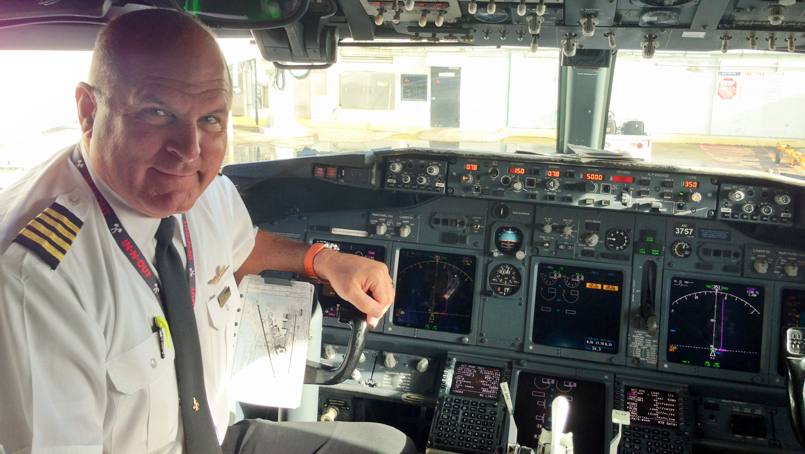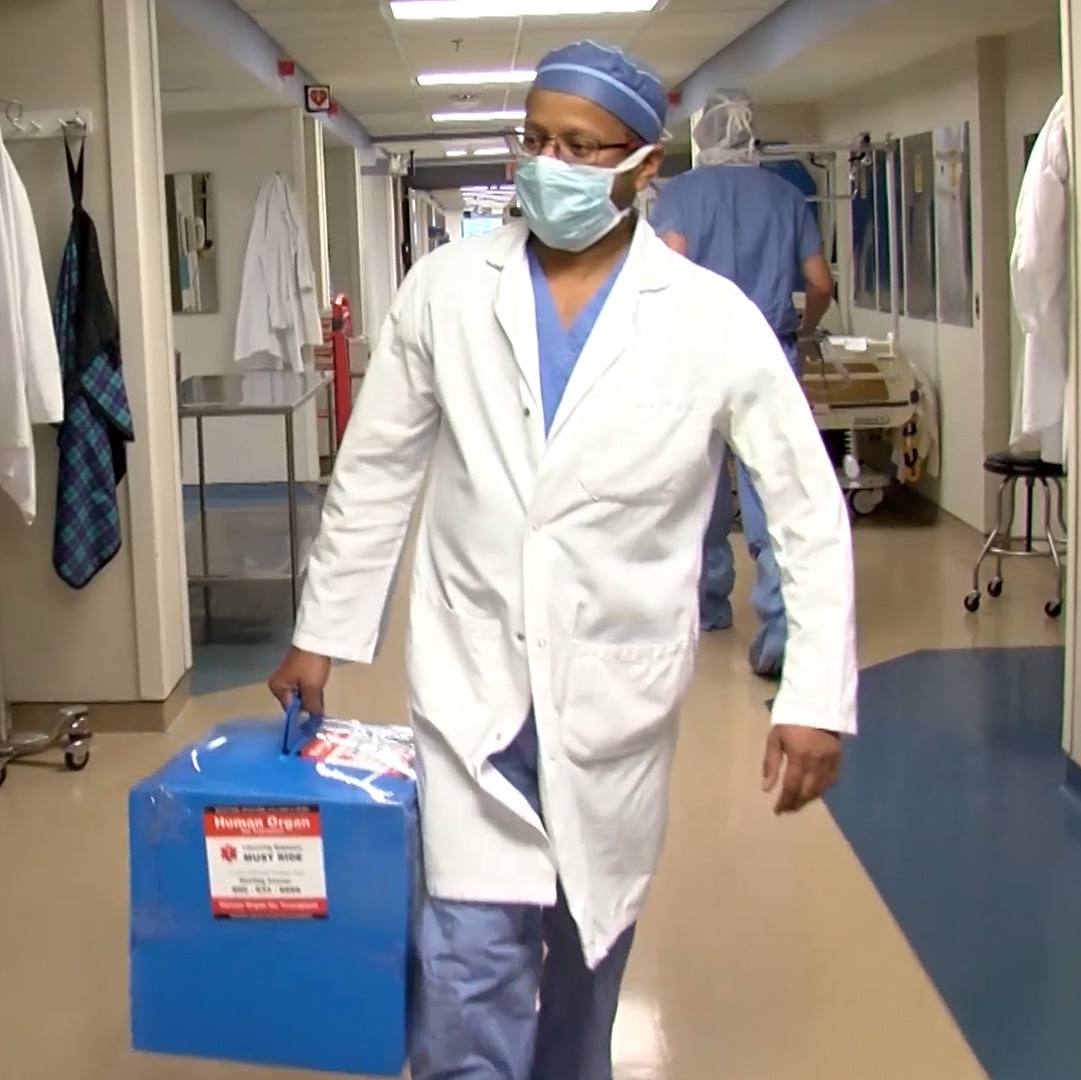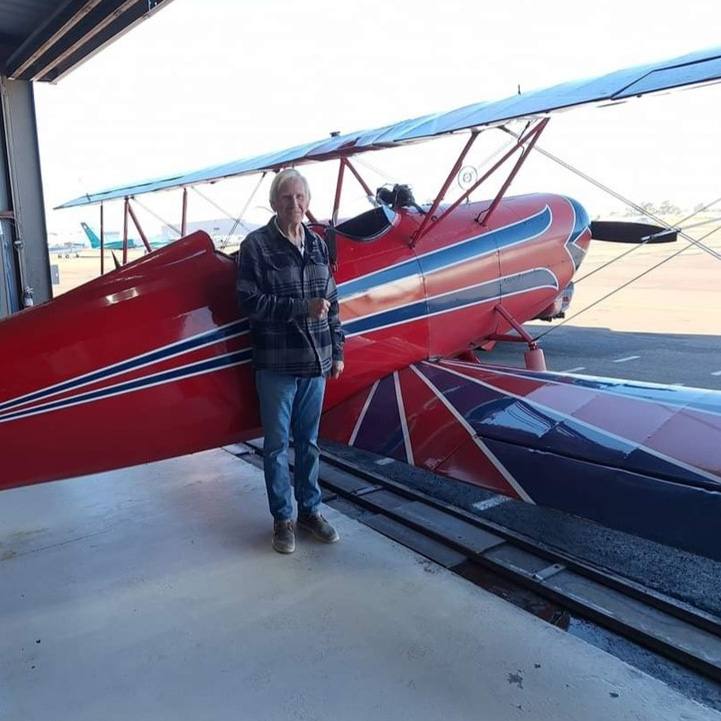-
Featured News
Sharing Mayo Clinic: Back in Flight
 At the age of 47, Parry Winder was looking forward to a bright future. Retired from two decades as a test and fighter pilot in the United States Air Force, Parry had transitioned into a non-military role that he relished as a commercial pilot and flight instructor. But in an instant, an accident brought Parry's aspirations for his new career crashing down.
At the age of 47, Parry Winder was looking forward to a bright future. Retired from two decades as a test and fighter pilot in the United States Air Force, Parry had transitioned into a non-military role that he relished as a commercial pilot and flight instructor. But in an instant, an accident brought Parry's aspirations for his new career crashing down.
Left with debilitating pain, Parry was forced to quit flying. He thought he'd never return to the cockpit. After searching for answers for more than eight years, though, he found the Pain Clinic at Mayo Clinic's Rochester campus was able to offer a solution. Today, Parry is pain-free and back in the skies again.
A devastating day
In 2004, Parry was regularly flying domestic and international flights as a captain for a U.S. airline. Part of his duties involved training new pilots. In May of that year, he was a working with a trainee in a flight simulator when a malfunction occurred. The simulator collapsed and fell about 10 feet onto the concrete floor below with Parry still inside.
"I was really broken up," Parry says. "Most of the right side of my body was badly injured. My neck, back, arm and right leg were all broken."
Over the next several years, Parry had multiple surgeries to repair the damage. Most of his injuries healed well, except for the one to his neck. Despite consultations with numerous doctors and a wide variety of treatments, he found that the pain persisted in his neck, shoulder and upper back. He had frequent, severe headaches. Eventually, he was told nothing more could be done, and that his only option was pain medication.
"I felt like I was living out of a pill bottle, and I hated it," Parry says. "Most of the time, the medication didn't do much for me. But because of the pills I was taking, I was grounded. I had to give up my wings."
A sign of hope
Eventually, Parry and his wife, Connie, resigned themselves to the fact that Parry's pain would always be part of their lives. In 2012, however, a glimmer of hope emerged.
At that time, the couple's oldest son was a medical resident at Mayo Clinic. At his church in Rochester, he met Bryan Hoelzer, M.D., an anesthesiologist who works in Mayo's Pain Clinic. The two discussed Parry's situation, and Dr. Hoelzer was intrigued. He encouraged Parry to come to Mayo Clinic for an evaluation.
"That the two of them met, and Dr. Hoelzer wanted to take a look at me, is really our miracle," Parry says. "The doctors at home had basically put me out to pasture. He was willing to give me a chance."
"We never dreamed it would get this much better. We just wanted some normalcy in life again. This is almost unbelievable. I'm currently pain-free and take zero medications." - Parry Winder
Parry and Connie flew from their home in Utah to Rochester, where Parry received a comprehensive evaluation from Dr. Hoelzer and his staff. Parry also met with physicians in Mayo Clinic's departments of Neurology, and Psychiatry and Psychology. After attempting several other treatments, Dr. Hoelzer wanted to try something different. He suggested a spinal cord stimulator.
The stimulator consists of electrodes placed on the spinal column connected via tiny wires to a device that generates mild electric impulses. The small generator is implanted under the skin on the back, typically during an outpatient procedure, so a hospital stay isn't required. The electric impulses the generator delivers to the spinal cord interrupt the pain messages that nerves constantly send to the brain in cases of chronic pain. It breaks the cycle of chronic pain and can often reduce pain in people for whom other treatments have failed.
A new approach
Parry had heard of spinal cord stimulators before. Several other doctors had discussed the possibility of a stimulator with him. All of them had rejected it because they believed the location of his injury was too high on his spine for such a treatment.
"Dr. Hoelzer said we could give it a try. If it didn't work, we'd take it out," Parry says. "Some of the other doctors were worried about possible nerve damage to my arms with the implant. But Dr. Hoelzer was confident it wouldn't be a problem. Connie and I were encouraged by his expertise and experience with other cases like mine. We felt this was really an answer to our prayers. If we didn't try it, we were at the end of our rope."
There have been major advances in the field of spinal cord stimulation over the past decade that have allowed physicians like Dr. Hoelzer to treat more complex pain conditions, such as Parry's. In fact, Dr. Hoelzer is one of nine physicians at Mayo Clinic that perform this procedure on a regular basis.
Parry's treatment started with a three-day trial of the spinal cord stimulator. It went well, and he experienced significant pain reduction. After the trial, the stimulator was removed, followed by a four-week waiting period to ensure it hadn't caused any damage. With no problems detected after four weeks, Parry received a permanent spinal cord stimulator in March 2013. The results have been far beyond his expectations.
A life renewed
"It's all gone incredibly well," Parry says. "We never dreamed it would get this much better. We just wanted some normalcy in life again. This is almost unbelievable. I'm currently pain-free and take zero medications."
Because he was able to quit taking pain medications, Parry could fly again. Today he's back to work full-time as a pilot. He's also catching up on time with his family and has returned to the active lifestyle he used to enjoy before the pain interrupted it.
"I can go boogie boarding and surfboarding with my kids at the beach. I can play with my grandkids again. It used to be that sharp noises, like a baby crying or a child shouting, would give me severe headaches, so I couldn't be with them," Parry says. "This has given me my life back, and more. Looking at where we've been and where we are now, the difference is incredible. I can enjoy flying again. My wife and I take wonderful trips. I can be with my family. Who would have ever dreamed it? We love Dr. Hoelzer, and we love Mayo Clinic."
HELPFUL LINKS
- Learn more about Pain Medicine at Mayo Clinic.
- Explore the departments of Neurology, and Psychiatry and Psychology.
- Request an appointment.







